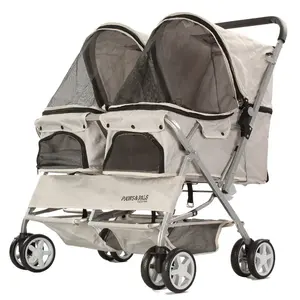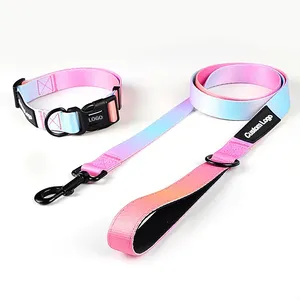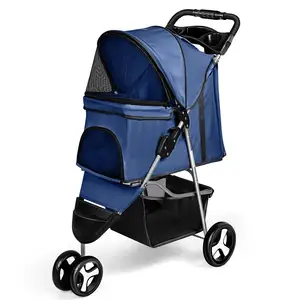Phổ biến trong ngành của bạn






YS-J2022T tốc độ cao Thông Minh Điện không chổi than chủ đề Tông đơ máy với thiết bị cảm ứng Chủ Đề Máy cắt
115,00 US$ - 121,00 US$
Đơn hàng tối thiểu: 1 Cái
Vận chuyển mỗi chiếc: 47,46 US$







Chính hãng da dây đeo cắt tự động công nghiệp vải xốp da vành đai máy cắt
5.000,00 US$ - 6.000,00 US$
Đơn hàng tối thiểu: 1 Bộ
Vận chuyển mỗi chiếc: 0,00 US$







Thẳng cắt CNC PVC tổng hợp PU da cắt và da lỗ đấm máy
3.600,00 US$ - 6.000,00 US$
Đơn hàng tối thiểu: 1 Bộ
Vận chuyển mỗi chiếc: 0,00 US$







Nắp chai vòng cắt gói dao nắp rạch lưỡi cho máy lắp ráp nắp nước giải khát
55,00 US$ - 70,00 US$
Đơn hàng tối thiểu: 5 Cái
Vận chuyển mỗi chiếc: 16,51 US$




Bán Sỉ Thiết Bị Kéo Máy Dệt Rapier Phụ Tùng Máy Móc Kẹp Đúc Dụng Cụ Cắt Ly Hợp Cho Máy Dệt Rapier Phụ Tùng
25.000,00 US$ - 55.000,00 US$
Đơn hàng tối thiểu: 1 Bộ





Trung Quốc Màu Xanh Lá Cây Nhà Net Máy Dệt Net Rapier Loom
5.000,00 US$ - 7.000,00 US$
Đơn hàng tối thiểu: 4 Bộ






Dệt Máy Tốc Độ Cao Trung Quốc Gf-opmax-i Sửa Chữa Loom Máy Rapier Loom
32.000,00 US$ - 63.000,00 US$
Đơn hàng tối thiểu: 1 Cái





high speed terry towel rapier loom with jacquard machine sales made in china
18.000,00 US$ - 28.000,00 US$
Đơn hàng tối thiểu: 1 Bộ





Ga588b tốc độ cao công nghiệp vải dệt máy sợi thủy tinh lưới rapier Loom
30.000,00 US$ - 38.000,00 US$
Đơn hàng tối thiểu: 1 Bộ






Tốc độ cao dệt máy dệt rapier Loom Terry khăn rapier Loom máy
7.500,00 US$
Đơn hàng tối thiểu: 1 Cái
Vận chuyển mỗi chiếc: 167,55 US$






Máy dệt gf-opmax-i sửa chữa máy dệt rapier Loom tốc độ cao Trung Quốc Sản phẩm mới 2024 máy dệt 2.5kW
32.000,00 US$ - 63.000,00 US$
Đơn hàng tối thiểu: 1 Cái






Ống Nhựa Vật Liệu Dệt Máy Mat Rapier Loom Giá Máy
6.000,00 US$ - 7.000,00 US$
Đơn hàng tối thiểu: 2 Bộ






new terry towel jacquard machine rapoer loom with direct factory price
18.000,00 US$ - 28.000,00 US$
Đơn hàng tối thiểu: 1 Bộ






Máy dệt rapeir tốc độ cao cho vải kỹ thuật vải sợi thủy tinh
32.000,00 US$ - 40.000,00 US$
Đơn hàng tối thiểu: 1 Bộ






Khăn làm rapier Loom Máy Trung Quốc rapier Loom máy dệt
35.000,00 US$ - 45.000,00 US$
Đơn hàng tối thiểu: 1 Cái





Tốc độ cao công nghiệp vải dệt máy sợi thủy tinh glassfiber sợi thủy tinh sợi thủy tinh rapier Loom
32.000,00 US$ - 40.000,00 US$
Đơn hàng tối thiểu: 1 Bộ






Bộ Phận Máy Dệt Số BA207667 Máy Cắt Cho Bộ Phận Máy Dệt Rapier Loom Cutter
15,00 US$ - 20,00 US$
Đơn hàng tối thiểu: 10 Bộ
Vận chuyển mỗi chiếc: 8,18 US$




Trung kéo rapier Loom phụ tùng K88 trung tâm cắt cho máy móc dệt
Sẵn sàng vận chuyển
17,50 US$
Đơn hàng tối thiểu: 2 Cái
Vận chuyển mỗi chiếc: 9,68 US$






Máy Cắt Khung Dệt Rapier Chất Lượng Cao Với Bộ Phận Số BA211564 Dùng Cho Máy Cắt Bộ Phận Máy Dệt
0,11 US$ - 0,20 US$
Đơn hàng tối thiểu: 1000 Cái






Goodfore tốc độ cao và tự động cao Khăn làm cho máy dệt rapier Loom
32.000,00 US$ - 63.000,00 US$
Đơn hàng tối thiểu: 1 Cái





Sợi thủy tinh khảm lưới cuộn sợi thủy tinh vải máy làm tốc độ cao rapier Loom
32.000,00 US$ - 40.000,00 US$
Đơn hàng tối thiểu: 1 Bộ





Dệt rapier dệt Loom máy Phụ tùng vamatex P1001 p1001es 9300084 sợi ngang cắt
16,00 US$ - 16,50 US$
Đơn hàng tối thiểu: 10 Cái






Máy dệt phụ tùng GTM như máy cắt ngang b87961 b52246 trái và phải cho rapier Loom
0,02 US$ - 0,03 US$
Đơn hàng tối thiểu: 10000 Cái
Vận chuyển mỗi chiếc: 0,02 US$





Rapier Loom phụ tùng r9500 lưỡi cho máy cắt hlt062a
Sẵn sàng vận chuyển
1,02 US$ - 1,25 US$
Đơn hàng tối thiểu: 10 Cái
Vận chuyển mỗi chiếc: 2,40 US$

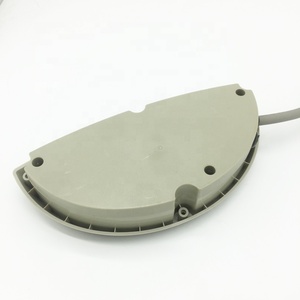



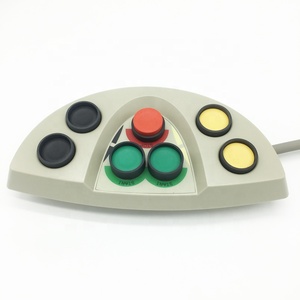
Bộ Phận Máy Dệt Hộp Điều Khiển Nút Nhấn Cho Máy Dệt Bằng Khí Nén
150,00 US$ - 230,00 US$
Đơn hàng tối thiểu: 10 Bộ


Phụ Tùng Máy Dệt Vải Phụ Tùng Động Cơ Máy Cắt Phụ Tùng Số BE309505 Máy Dệt Rapier
7,60 US$ - 10,00 US$
Đơn hàng tối thiểu: 1 Cái






Carbon/Bazan/sợi thủy tinh geogrid lưới dệt máy tốc độ cao rapier Loom
32.000,00 US$ - 38.000,00 US$
Đơn hàng tối thiểu: 2 Cái






Không khí máy bay phản lực Loom rapier Loom phụ tùng 710 Cutter Blade cho máy móc dệt
Sẵn sàng vận chuyển
1,40 US$ - 1,55 US$
Đơn hàng tối thiểu: 10 Cái
Vận chuyển mỗi chiếc: 0,38 US$











Máy Dệt Rapier Máy Cắt Sợi Ngang Mavatex P401 Cho Máy Dệt Phụ Tùng Máy Cắt Sợi Ngang Mavatex
13,00 US$ - 14,00 US$
Đơn hàng tối thiểu: 10 Cái





Carbon/Bazan/sợi thủy tinh geogrid lưới dệt máy tốc độ cao rapier Loom
30.000,00 US$ - 38.000,00 US$
Đơn hàng tối thiểu: 1 Bộ




Giá Tốt Chất Lượng Cao Dệt Dệt Loom Máy Móc Phụ Tùng R9500 Lưỡi Cắt
5,00 US$ - 15,00 US$
Đơn hàng tối thiểu: 10 Cái


Phụ Tùng Máy Dệt Rapier Trung Quốc Phụ Tùng Máy Cắt Máy Dệt RHS Rapier Phần Số: BE302729
19,70 US$ - 25,70 US$
Đơn hàng tối thiểu: 1 Cái






Rapier Loom phụ tùng Gamma sợi ngang cắt Thiết bị cắt lưỡi cắt
Sẵn sàng vận chuyển
17,00 US$ - 18,00 US$
Đơn hàng tối thiểu: 10 Cái
Vận chuyển mỗi chiếc: 11,24 US$






Chất lượng tốt dệt Muller II sợi ngang cắt cho máy dệt phụ tùng
0,02 US$ - 0,03 US$
Đơn hàng tối thiểu: 10000 Cái
Vận chuyển mỗi chiếc: 0,02 US$





Tốc độ cao Thảm vải dây chuyền sản xuất Jacquard rapier Loom máy dệt với Jacquard điện tử
46.800,00 US$ - 49.800,00 US$
Đơn hàng tối thiểu: 2 Cái






Phụ Tùng Máy Dệt Rapier Máy Cắt DNR Kéo Cắt Cạnh Phế Liệu Trái Và Phải Cho Máy Dệt
12,00 US$ - 25,50 US$
Đơn hàng tối thiểu: 2 Cái






Máy Cắt Khung Dệt Rapier Chất Lượng Cao Với Bộ Phận Số BA211564 Dùng Cho Máy Cắt Bộ Phận Máy Dệt
5,00 US$ - 20,00 US$
Đơn hàng tối thiểu: 10 Bộ
Vận chuyển mỗi chiếc: 8,18 US$
Các danh mục hàng đầu
Giới thiệu về máy cắt dệt rapier
Alibaba.com cung cấp các sản phẩm 286 máy cắt dệt rapier. Có rất nhiều máy cắt dệt rapier lựa chọn dành cho bạn, chẳng hạn như thái lan, ấn độ, và indonesia. Bạn cũng có thể chọn từ may mặc cửa hàng, nhà máy sản xuất, và bán lẻ máy cắt dệt rapier. Cũng như từ động cơ, plc, và mang máy cắt dệt rapier.Và bất kể máy cắt dệt rapier là cung cấp, không có sẵn.
